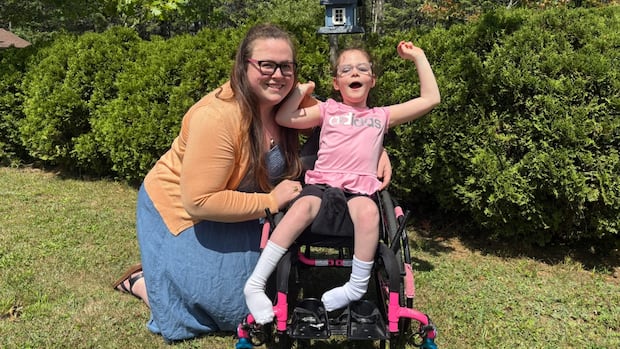This story is part of CBC Health’s Second Opinion, a weekly analysis of health and medical science news emailed to subscribers on Saturday mornings. If you haven’t subscribed yet, you can do that by clicking here.
Despite a rule that requires sex and gender to be considered when funding medical research in Canada, new research shows the number of grants for women’s health studies hasn’t budged in five years, something doctors say has serious implications for their patients.
The Canadian Institutes of Health Research (CIHR) has mandated the inclusion of sex and gender as criteria for awarding grants since 2010. Despite that, a group of researchers found in 2023 that less than six per cent of Canadian health research funding went to women’s health. Now, their new study is also analyzing how narrow the field of women’s health research is.
While women’s health is currently more focused on areas like pregnancy and breast and gynecological cancers, doctors and researchers say they want to see the field broaden to include other conditions, like migraine headaches, chronic pelvic pain and fibromyalgia, which studies show are more common among women, but garner less research funding.
Dr. Tania Di Renna, the medical director of the Toronto Academic Pain Medicine Institute, who works as an anesthesiologist at Women’s College Hospital in Toronto, says she promises her patients she’ll study their conditions with the goal of finding the source of their chronic pelvic pain, something she says is important, because traditionally, health-care professionals have brushed off women’s pain.
Di Renna says that’s partly because before 1993, women were rarely included in clinical trials due to concerns that pregnancy could interrupt the study, or that trials could pose potential dangers to the fetus. Di Renna also notes that medical researchers would even leave female animals out of studies.
Let’s Go9:02A group of McGill medical students are working to improve healthcare for women
They created WHAM — the Women’s Health Awareness Movement. It’s a group that’s been leading awareness campaigns about conditions such as heart disease, breast cancer and endometriosis… and it’s just the beginning. Allison Engo is a second year medical student at McGill university and president and founder of Women’s Health Awareness Movement (WHAM).
Lack of clinical trials for women
These concerns trace back to the use of thalidomide in the late 1950s and early 1960s. The morning sickness drug had debilitating effects on babies in multiple countries, including Canada.
Di Renna sees this lack of female subjects in clinical trials play out when it comes time to prescribe medications for her patients suffering with chronic pelvic pain. She says when she prescribes medications, her patients often tell her about certain side effects they experience.
“Women tell me that, ‘I can’t take this drug. It makes me nauseous. It makes me gain weight. It makes me sedated.’ [Women] have so many things going against us already, and now even the medications that are there to treat you are going against you.”
Due to policy and social changes in the 1990s, research into women’s health has increased, but Di Renna says there’s more work to be done.
For example, the way women respond to opioid pain medications differs from men, but why this is remains unclear, Di Renna said.
In 2022, a review of studies on sex-related differences in response to medications concluded that opioids seemed to produce better pain relief in women, especially when administered for a few days. But responses also seemed inconsistent, with factors like the type of treatment, menopausal status and characteristics of the pain all contributing.
This kind of uncertainty and lack of research means physicians may not be able to find the cause of chronic pain for female patients. In those cases, Di Renna says “we really have to move on and focus on how you can live with a good quality of life.”
Other physicians say this may include better medications to treat pain, or other methods of pain management such as physio, meditation, or even heating pads for cramps.
As the menopause movement heats up, The National brings together the experts to answer your questions — and our viewers had a lot of them — about the signs, symptoms and treatment options.
Low funding, narrow focus
Migraines are an example of a condition that research shows impacts more women than men.
The prevalence of migraines is the same for girls and boys before puberty, according to Dr. Peter Goadsby, a neurologist in headache disorders at King’s College Hospital in London. But doctors have observed that after the first period, women experience migraines three times more frequently than men, and that migraines typically decline after menopause.

Despite this, the authors of a new Canadian preprint found a single female-specific grant application to CIHR for the study of how migraines affect women over 13 years.
Overall, Liisa Galea and her team found female-specific research funding has not changed since 2020, staying at about seven per cent.
The study, which hasn’t yet been peer-reviewed, also suggests that the research conducted in women’s health largely focuses on breast and gynecologic cancers or pregnancy. They argue the field of women’s health research should be much broader.
Galea, who holds the Treliving Family Chair in Women’s Mental Health at Toronto’s Centre for Addiction and Mental Health, led the new analysis, as well as a similar submission to the House of Commons health committee in 2024.
A woman in Canada dies of heart disease every 22 minutes, and most don’t have to. CBC’s Ioanna Roumeliotis explores why so many women are underdiagnosed and what they can do to protect themselves.
She says she experienced pushback herself when she applied for CIHR grants to examine the influence of pregnancy history on the risk of Alzheimer’s disease. Galea says she was told that she needed to add biological males to her study.
“Unless you’re Arnold Schwarzenegger in a particular movie, you can’t get a male pregnant. But that was a criticism.”
To Galea, the answer is that medical researchers should be “allowed to just study females.”
Millions of migraines, little investment
How and why hormones affect migraines is not fully understood, but scientists say migraine attacks related to menstruation tend to be longer.
Goadsby, the neurologist, says this suggests fluctuations in hormones like estrogen and progesterone play a role.
Jerilynn Prior, who researches women’s reproductive health at the Centre for Menstrual Cycle and Ovulation Research at the University of British Columbia, says that when it comes to migraines, estrogen itself may not cause the condition, but changes in hormone levels can influence how pain is interpreted.

Prior has run several randomized control trials showing that progesterone capsules improve deep sleep in certain perimenopausal women.
“I think of estrogen as a brain-activating hormone,” Prior said. “It is also associated with inflammation, which is associated with pain. I think of progesterone as estrogen’s partner hormone, and it’s associated with brain calming.”
She notes that pain is a very personal sensation and that a whole host of non-medical factors can make it better or worse, including social stress and environment.
For Goadsby, the fact that we know so little about female migraine pain indicates that our understanding of women’s health is seriously lacking.
“How did we get to the point where there are hundreds of millions of females with migraines in the world and we don’t understand the biology terribly well? We haven’t invested in it,” he said.
“It’s a glaring area that needs more work.”









